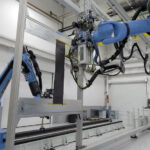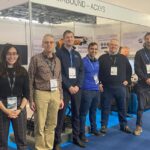“As the number of flight hours indicate, the V-22 Osprey is a mature platform that projects a versatile mission capability for military operations as well as humanitarian relief efforts,” says U.S. Marine Corps Col. Matthew Kelly, V-22 joint program manager. Since entering service, the V-22 has been deployed in numerous missions around the world, including casualty evacuation, tactical recovery of aircraft and personnel, humanitarian assistance/disaster relief, resupply, VIP transport and theater security cooperation. “The versatile V-22 Osprey is in demand and indispensable among commanders worldwide,” says Kristin Houston, vice president, Boeing Tiltrotor Programs and deputy director, Bell Boeing V-22 Program. “In order to improve readiness for our servicemen and women, we are significantly investing for the long term through modifications and upgrades to our V-22 factory in Philadelphia. Together with Bell Helicopter, we are proud of achieving this flight-hour milestone. Our strategic alliance enables the continued success of this program.” “This 400,000-flight-hour milestone is an incredible testament to the V-22’s leap-ahead capability and is a tribute to the men and women of Bell Helicopter and Boeing who build and support tiltrotor aircraft,” says Vince Tobin, executive vice president of Military Programs at Bell Helicopter. “The Osprey brings unprecedented range, speed and survivability to the warfighter and will continue to excel in combat and in executing some of the most difficult humanitarian operations.” The Bell Boeing V-22 Osprey is a joint-service, multirole combat aircraft that uses tiltrotor technology to combine the vertical performance of a helicopter with the speed and range of a fixed-wing aircraft. With its nacelles and rotors in vertical position, it can take off, land and hover like a helicopter. Once airborne, its nacelles can be rotated to transition the aircraft to a turboprop airplane capable of high-speed, high-altitude flight.













